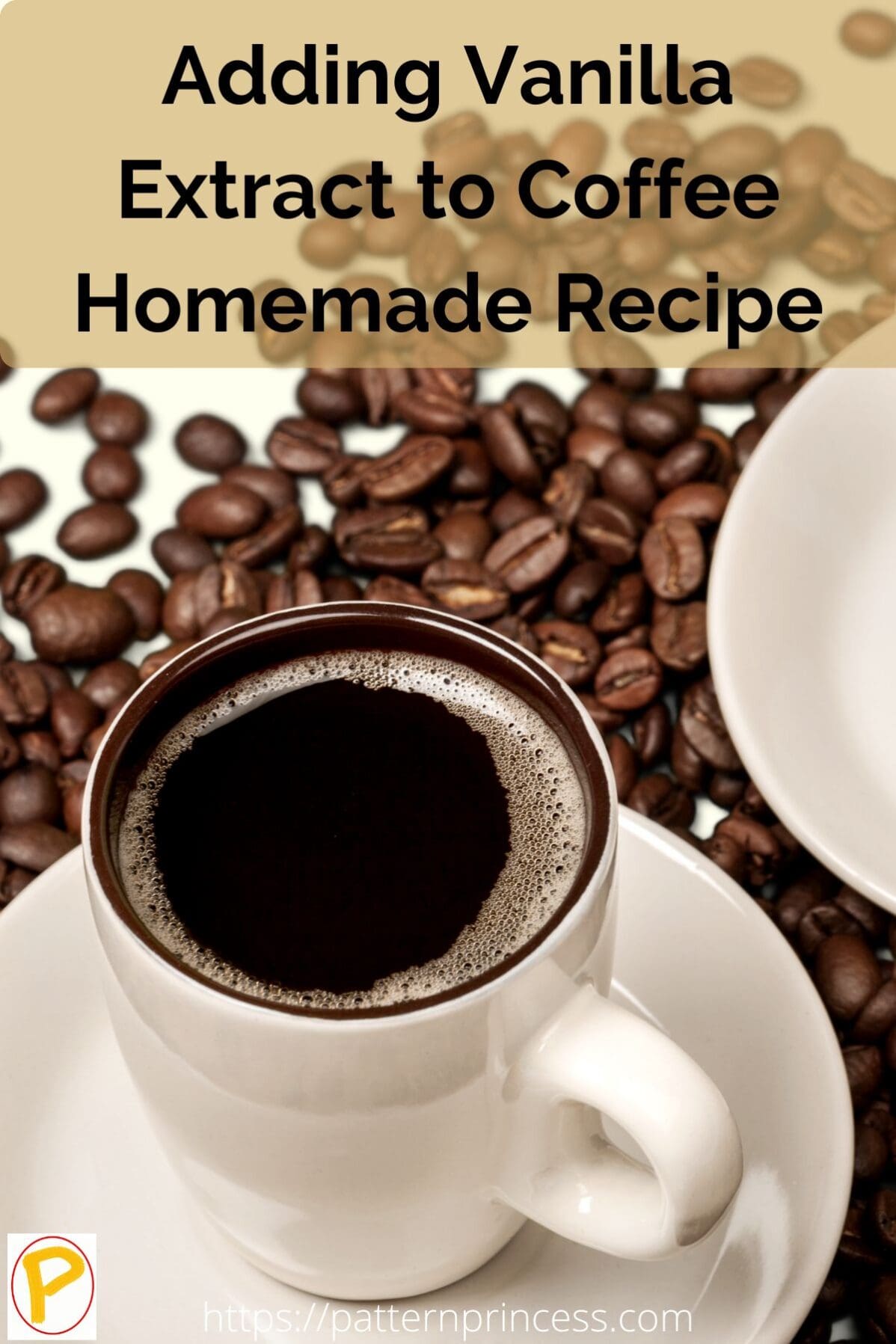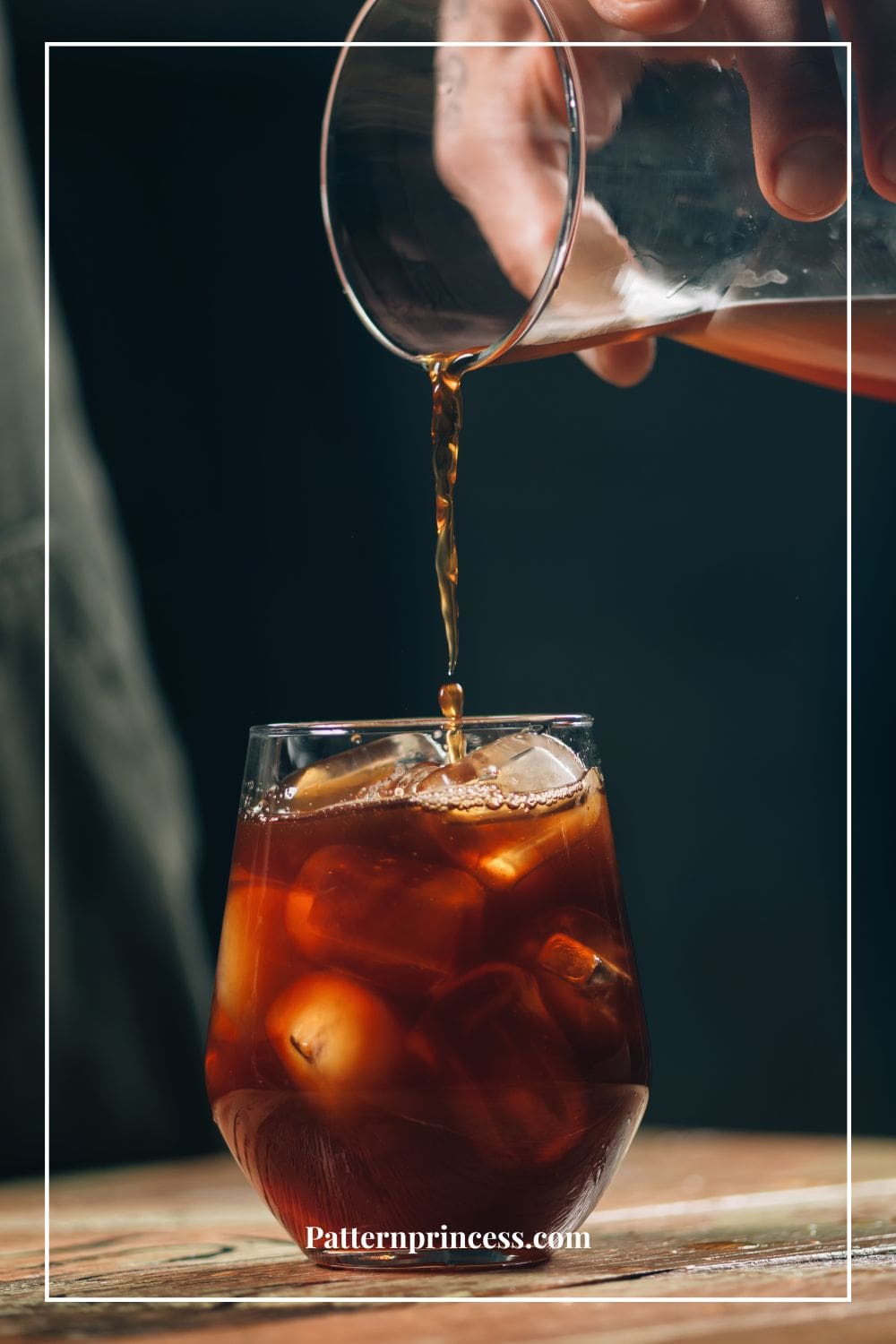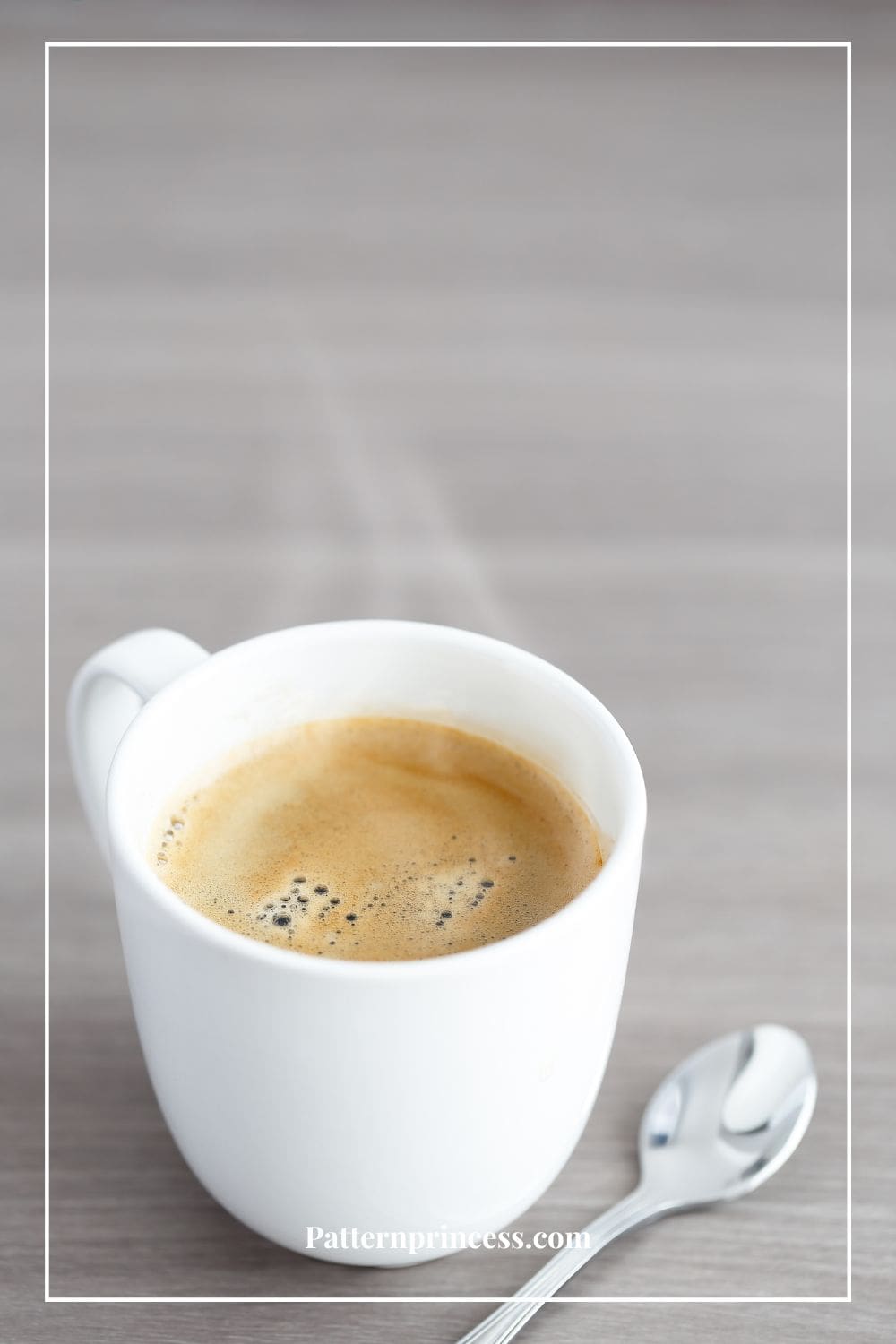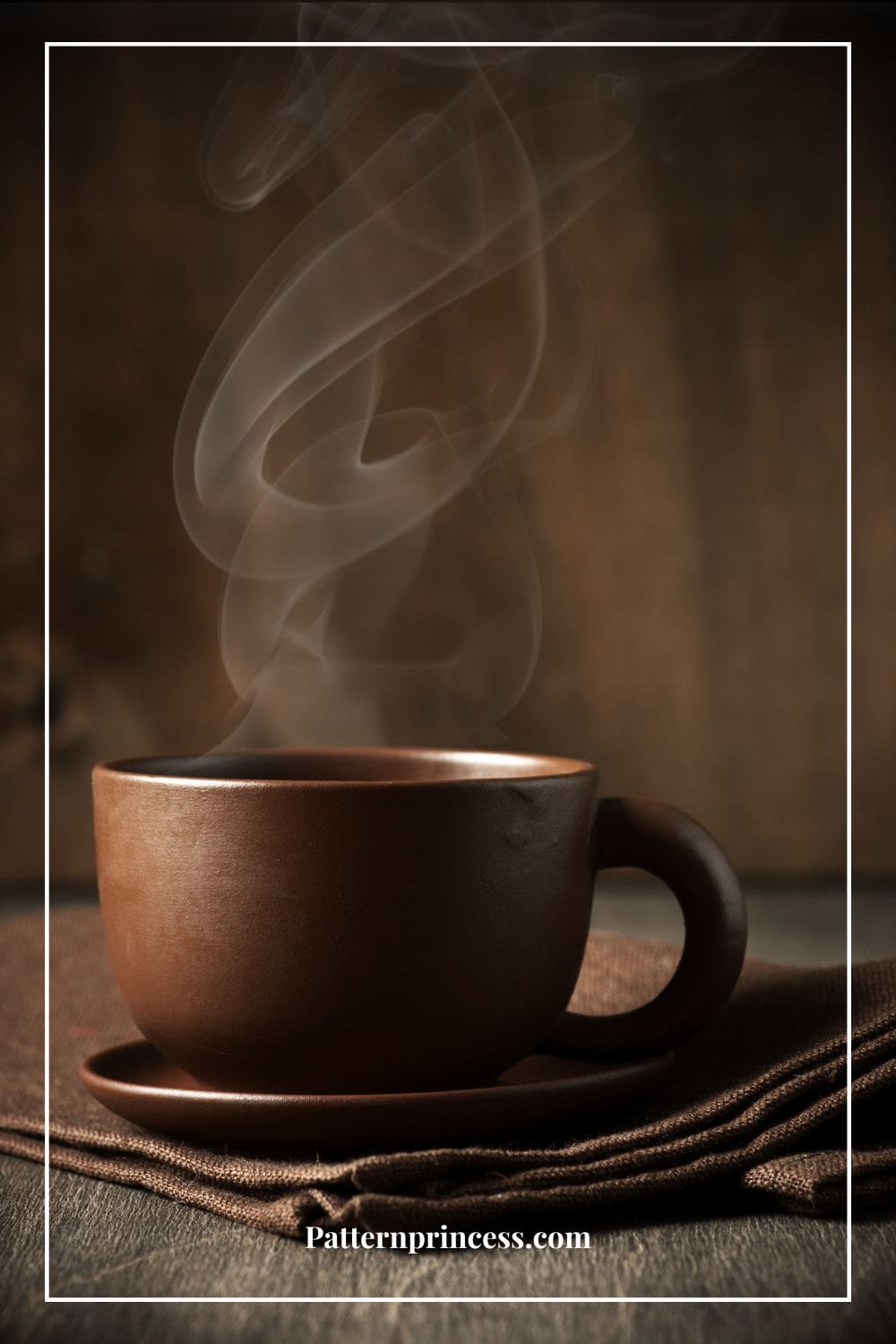Last updated on July 4th, 2024 at 11:30 pm
Learn about adding vanilla extract to coffee. Infuse your morning cup with the sweet, aromatic essence of vanilla beans.
Whether you’re a seasoned barista or a casual coffee enthusiast, this simple yet indulgent addition can turn your daily routine into a gourmet experience.
Coffee lovers around the world can attest to the sheer joy of that first sip of morning brew. The aroma that fills the air, the warmth that envelops your senses, and the invigorating jolt of caffeine.
Elevate Your Morning Brew: Adding Vanilla Extract to Coffee Homemade Recipe
It’s a ritual that kickstarts our day and provides comfort in its simplest form. But what if we told you there’s a delightful twist you can add to your daily cup of java that can elevate your coffee experience to new heights? Say hello to the magical pairing of coffee and vanilla extract.
Grab your favorite mug and find out how to make your own favorite vanilla coffee recipe and how much to put in your morning brew. It’s time to take your coffee game up a notch. It’s the best way to have coffee shop quality in your morning cup of coffee.
This recipe works with cold brew, French press, instant coffee, drip coffee, or any other type you prefer.
How Much Vanilla Extract Should You be Using in Coffee?
How much vanilla you should add depends on a few things.
- Such as what type of vanilla.
- Is it a homemade vanilla bean extract or store bought pure vanilla extract, or imitation extract.
- Or the level of vanilla flavoring you are looking for.
Adding The Perfect Amount of Vanilla Flavor to Your Morning Cup of Joe
To get the best flavor and sweetness out of a pot of coffee, you should use no more than half a teaspoon of vanilla extract.
However, the amount of vanilla extract you should use in coffee depends on your personal taste preferences and the size of your coffee serving. Vanilla extract is a concentrated flavoring, so a little goes a long way.
Here are some general guidelines to get you started:
Start Small:
It’s best to start with a small amount of vanilla extract and then adjust to taste. A drop or two can be a good starting point.
Consider Coffee Size:
The amount of vanilla extract you use should also depend on the size of your coffee serving. For a standard 8-ounce cup of coffee, a drop or two is usually sufficient. If you’re making a larger coffee, like a 16-ounce mug, you might want to use 2-4 drops.
Quality Matters:
The quality and strength of your vanilla extract can vary, so consider the brand and type you’re using. Pure vanilla extract is more potent than imitation vanilla, so you’ll need less of it to achieve the same flavor. Homemade vanilla extract can be just as potent as pure if not more potent, so you may need even less for all that delicious taste.
Experiment:
Taste is subjective, so don’t be afraid to experiment. Start with a small amount, taste your coffee, and add more if needed. Keep in mind that it’s easier to add more vanilla extract if your coffee isn’t flavorful enough than to remove it if you’ve added too much.
Combine with Sweeteners:
If you’re adding vanilla extract to your coffee and you also like a sweet taste, consider using it in conjunction with your sweetener of choice. Popular options include sugar, honey, or a flavored syrup. This can help balance the flavors and sweetness to your liking.
Remember that the goal is to enhance the flavor of your coffee with a hint of vanilla, not to overpower it. Overusing vanilla extract can make your coffee taste artificial or too sweet. Start conservatively, and you can always add more if you want a stronger vanilla flavor.
Vanilla Coffee Recipe (Hot and Cold) with Vanilla Extract
As an Amazon Associate I earn from qualifying purchases.
Kitchen Essentials
Ingredients
For Hot Vanilla Coffee:
- 1 cup hot brewed coffee
- 1/4 to 1/2 teaspoon pure vanilla extract adjust to taste
- 1-2 tablespoons sweetener of your choice e.g., granulated sugar, honey, or maple syrup, adjust to taste
- 2-3 tablespoons milk or cream adjust to taste
- Whipped cream optional
- Ground cinnamon or cocoa powder optional
For Iced Vanilla Coffee:
- 1 cup cold brewed coffee
- 1/4 to 1/2 teaspoon pure vanilla extract adjust to taste
- 1-2 tablespoons sweetener of your choice adjust to taste
- 2-3 tablespoons milk or cream adjust to taste
- Ice cubes
- Whipped cream optional
- Chocolate or caramel drizzle optional
text ingredients
Instructions
Hot Coffee with Vanilla:
- Brew a cup of your favorite coffee.
- In a coffee mug, add 1/4 to 1/2 teaspoon of pure vanilla extract (adjust to your preferred intensity).1 cup hot brewed coffee, 1/4 to 1/2 teaspoon pure vanilla extract
- Stir in 1-2 tablespoons of your chosen sweetener until dissolved.1-2 tablespoons sweetener of your choice
- Pour the hot coffee into the mug and stir to combine.
- Add 2-3 tablespoons of milk or cream to taste and stir again.2-3 tablespoons milk or cream
- Top with whipped cream if desired and a sprinkle of ground cinnamon or cocoa powder.Whipped cream, Ground cinnamon or cocoa powder
Iced Coffee with Vanilla:
- Brew a cup of coffee and let it cool to room temperature.1 cup cold brewed coffee
- Fill a glass with ice cubes.
- Add 1/4 to 1/2 teaspoon of pure vanilla extract (adjust to taste).1/4 to 1/2 teaspoon pure vanilla extract
- Stir in 1-2 tablespoons of your preferred sweetener until well mixed.1-2 tablespoons sweetener of your choice
- Pour the cooled coffee over the ice.Ice cubes
- Add 2-3 tablespoons of milk or cream and stir to combine.2-3 tablespoons milk or cream
- Top with whipped cream and a drizzle of chocolate or caramel sauce if desired.Whipped cream, Chocolate or caramel drizzle
Your Own Private Notes
Notes
Recipe Variations:
- For a dairy-free version, use almond milk, soy milk, or oat milk.
- Experiment with flavored syrups like hazelnut or caramel for different flavor profiles.
- Adjust the sweetness to your liking by varying the amount of sweetener used.
Nutrition
A few of my favorite things
The Power of Positivity
Make Your Own Vanilla Extract Using Vanilla Pods
Just a few simple ingredients and you have your own extract that will last for years. Use the recipe on our sister website to find out how easy it is to make your own Homemade Vanilla Extract.
It’s a great way to impart delicious rich flavor into so many recipes.
What Can Vanilla and Vanilla Beans Be Used For?
Vanilla and vanilla beans are incredibly versatile ingredients that can be used in a wide range of culinary applications to add a delightful, sweet, and aromatic flavor to both sweet and savory dishes. Here are some common uses for vanilla and vanilla beans:
Baking:
Vanilla Extract: Vanilla extract is a staple in baking. It’s used in recipes for cakes, cookies, muffins, brownies, and other baked goods to enhance flavor.
Vanilla Bean: You can scrape the seeds from a vanilla bean and add them to your baking recipes for a more intense vanilla flavor. The empty vanilla pod can be placed in sugar to make vanilla sugar.
Desserts:
Custards: Vanilla is a key ingredient in custards, such as crème brûlée and flan.
Ice Cream: Vanilla is a classic flavor for homemade ice cream.
Puddings: It’s used in both rice pudding and bread pudding.
Beverages:
Coffee and Tea: A drop of vanilla extract can enhance the flavor of coffee or tea.
Cocktails: Vanilla can be used in various cocktails, such as vanilla martinis or vanilla-infused spirits.
Sauces and Syrups:
Dessert Sauces: Vanilla can be added to fruit sauces, caramel sauces, or chocolate sauces to create a richer flavor.
Simple Syrup: Vanilla-infused simple syrup is great for sweetening beverages and cocktails.
Breakfast Foods:
Pancakes and Waffles: Vanilla extract can be added to pancake and waffle batter for a delicious breakfast treat.
Oatmeal: A dash of vanilla extract can make your morning oatmeal more flavorful.
Savory Dishes:
While vanilla is primarily associated with sweet dishes, some chefs experiment with using vanilla in savory dishes like sauces for seafood or poultry. However, this is less common.
Homemade Extracts and Flavorings:
You can make your own vanilla extract by steeping vanilla beans in alcohol (e.g., vodka) over time. This homemade extract can be used in baking and cooking.
Potpourri and Home Fragrance:
Vanilla-scented potpourri or homemade sachets can add a pleasant aroma to your home.
DIY Beauty Products:
Vanilla is sometimes used in homemade beauty products, such as vanilla-scented body scrubs, lotions, and perfumes.
Flavoring Liquors:
Some people infuse vanilla into liquors like vodka or bourbon to create homemade vanilla-flavored spirits.
Vanilla’s sweet and comforting flavor makes it a beloved ingredient in many culinary creations. Whether you’re using vanilla extract for a subtle hint of flavor or scraping the seeds from a vanilla bean for a more intense taste, it can elevate your dishes and desserts to new heights.
Can I use vanilla extract instead of vanilla syrup in coffee?
Yes, you can use vanilla extract instead of vanilla syrup in coffee, but it’s important to do so sparingly because vanilla extract is highly concentrated. Here’s how to use vanilla extract as a substitute for vanilla syrup in coffee:
Measure Carefully: Vanilla extract is much stronger in flavor than vanilla syrup, so you’ll need to use it in very small quantities. Start with just a drop or two for a standard 8-ounce cup of coffee.
Stir Well: After adding the vanilla extract to your coffee, be sure to stir it thoroughly to evenly distribute the flavor.
Taste and Adjust: Taste your coffee and adjust the amount of vanilla extract as needed. If you’d like a stronger vanilla flavor, you can add an additional drop or two, but be cautious not to overdo it.
Consider Sweeteners: Vanilla syrup not only adds flavor but also sweetness to coffee. If you want to replicate both the flavor and sweetness of vanilla syrup, you may need to add a sweetener of your choice (e.g., sugar, honey, or a flavored syrup) separately to your coffee.
Experiment: Keep in mind that the exact amount of vanilla extract you’ll need can vary based on your personal taste preferences and the strength of the vanilla extract you have. It’s a good idea to start with a minimal amount and gradually add more if necessary.
Using vanilla extract can give your coffee a nice vanilla flavor, but remember that it won’t provide the same sweetness as vanilla syrup. Adjusting the sweetness separately is key to replicating the full experience of vanilla syrup in your coffee.
Can I use vanilla extract instead of vanilla syrup in coffee?
You might be wondering about Vanilla Extract in Coffee: Should You Add it?
Yes, you can use vanilla extract instead of vanilla syrup in coffee, but it’s important to do so sparingly because vanilla extract is highly concentrated. Here’s how to use vanilla extract as a substitute for vanilla syrup in coffee:
Measure Carefully: Vanilla extract is much stronger in flavor than vanilla syrup, so you’ll need to use it in very small quantities. Start with just a drop or two for a standard 8-ounce cup of coffee.
Stir Well: After adding the vanilla extract to your coffee, be sure to stir it thoroughly to evenly distribute the flavor.
Taste and Adjust: Taste your coffee and adjust the amount of vanilla extract as needed. If you’d like a stronger vanilla flavor, you can add an additional drop or two, but be cautious not to overdo it.
Consider Sweeteners: Vanilla syrup not only adds flavor but also sweetness to coffee. If you want to replicate both the flavor and sweetness of vanilla syrup, you may need to add a sweetener of your choice (e.g., sugar, honey, or a flavored syrup) separately to your coffee.
Keep in mind that the exact amount of vanilla extract you’ll need can vary based on your personal taste preferences and the strength of the vanilla extract you have. It’s a good idea to start with a minimal amount and gradually add more if necessary.
Using vanilla extract can give your coffee a nice vanilla flavor but remember that it won’t provide the same sweetness as vanilla syrup. Adjusting the sweetness separately is key to replicating the full experience of vanilla syrup in your coffee.
Can You Add Vanilla Extract To Brewed Coffee?
Yes, you can add vanilla extract into your freshly brewed coffee. This infusion can elevate the coffee’s flavor profile, imparting a gentle, sweet aroma that elevates your morning brew to a delightful treat.
It is a simple yet effective way to infuse your cup of coffee with a touch of sophistication.
However, due to its concentrated nature, merely a few drops of vanilla extract are needed to introduce a mild, sweet undertone to your coffee.
For an extra layer of complexity, consider experimenting with other extracts like almond extract or hazelnut extract to craft a unique twist on your beloved beverage.
What Types of Sweeteners Can I Use in Coffee?
The choice of sweetener in your coffee is a matter of personal preference. Different sweeteners can impart varying flavors and sweetness levels to your coffee. Here are some common sweeteners used in coffee, along with their characteristics:
Granulated Sugar: This is the most common sweetener for coffee. It dissolves easily and provides a neutral sweetness.
Brown Sugar: Brown sugar has a slightly caramelized flavor and can add a subtle richness to your coffee.
Honey: Honey adds a natural sweetness with floral undertones. It’s a popular choice for those who prefer a more natural sweetener.
Maple Syrup: Maple syrup offers a distinctive, rich, and earthy sweetness. It pairs well with coffee, especially in colder months.
Agave Nectar: Agave nectar is a natural sweetener with a mild, neutral flavor. It dissolves easily in cold beverages.
Stevia: Stevia is a calorie-free sweetener derived from the leaves of the stevia plant. It’s much sweeter than sugar, so you’ll need very little.
Artificial Sweeteners: Options like sucralose, aspartame, and saccharin are calorie-free alternatives to sugar. They can be suitable for those who want to reduce calorie intake but may have a distinct aftertaste for some people.
Flavored Syrups: Vanilla, caramel, hazelnut, and other flavored syrups are common choices for adding sweetness and flavor to coffee. They come in a variety of flavors to suit your taste.
Ultimately, the best sweetener for your coffee depends on your individual preferences. Some people enjoy experimenting with different sweeteners to discover their favorite combination. Start with a small amount and adjust to taste, keeping in mind that the sweetness level can vary widely based on the type and brand of sweetener used.
Are You a Coffee Lover?
You don’t have to settle for just black coffee in the morning. Here are a few other coffee recipes you may enjoy.
Exploring the Art of Cold Brew Coffee
Almond Joy Coffee Creamer Copycat
Continue exploring other morning coffee recipes.
You can find Victoria crocheting, quilting, and creating recipes. She has cooked in restaurants for over 20 years, including many larger parties. She learned to crochet when she was just 11 years old and has been crocheting ever since; over 50 years now. Over 40 years ago, she loved her first class in sewing and continues to hone her skills in quilting. Many have enjoyed the handmade gifts over the years. In her professional career, she has worked in management in a wide variety of businesses including higher education as a dean of a division. All the while attending college part-time to achieve her doctorate in higher education with an emphasis in e-learning.









